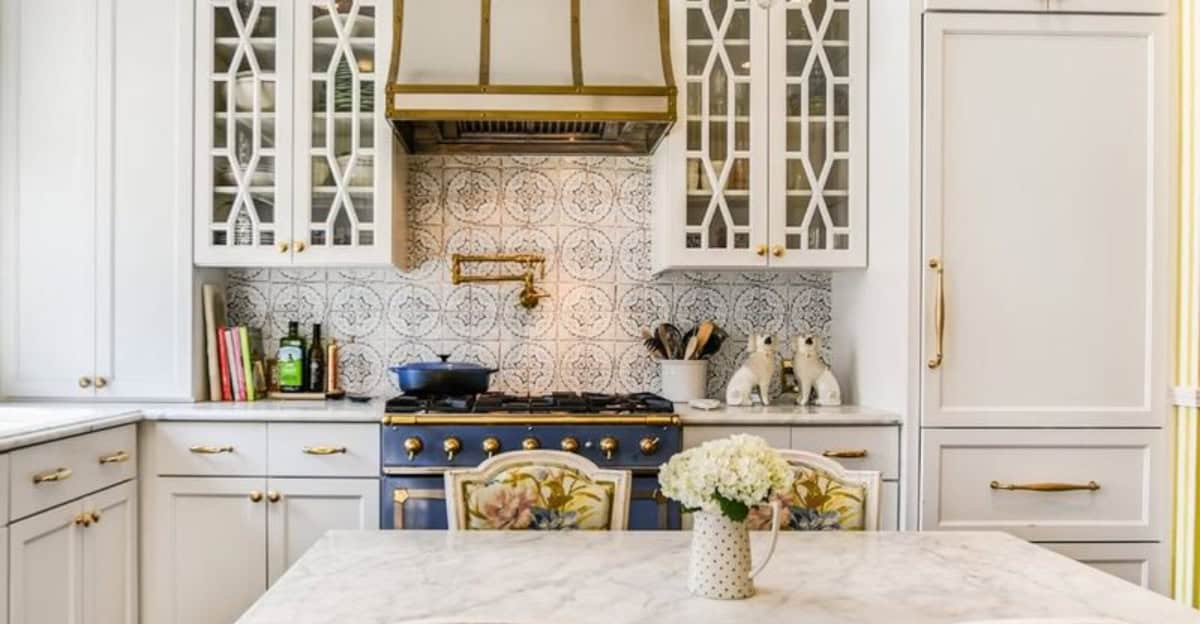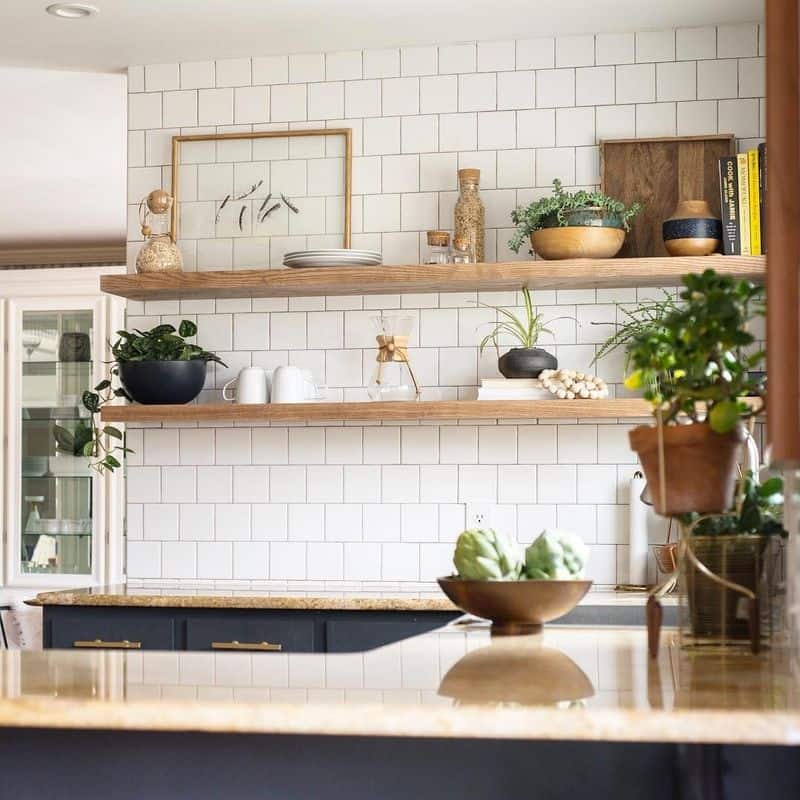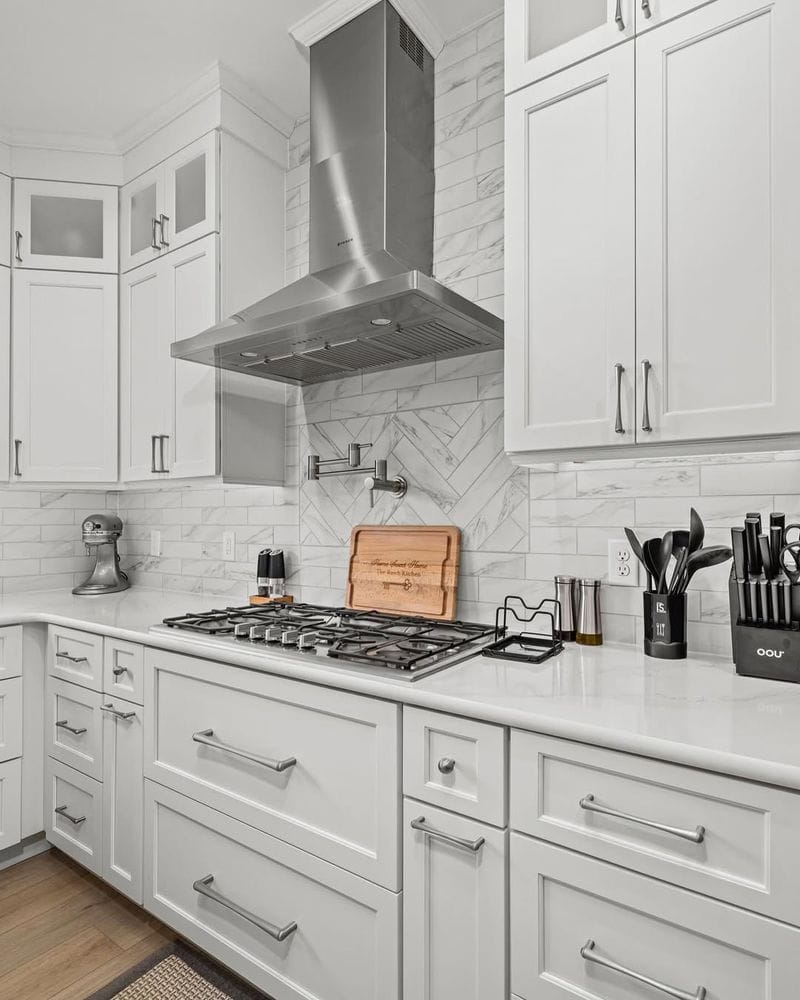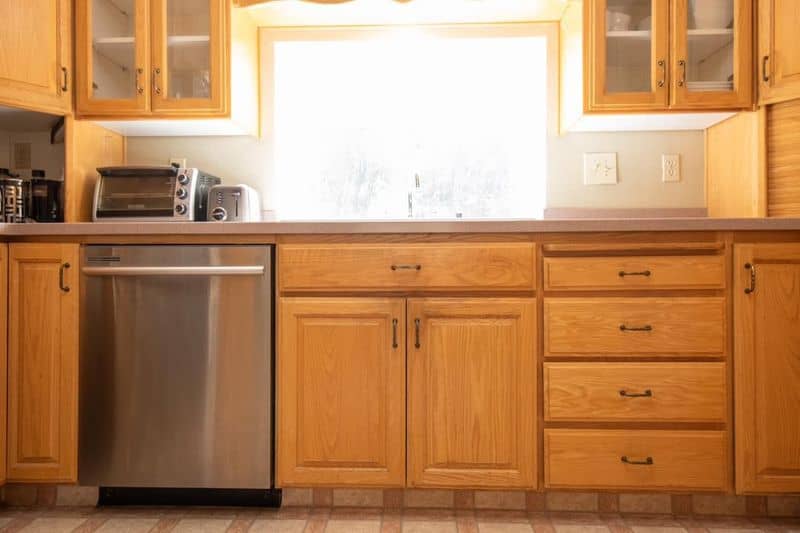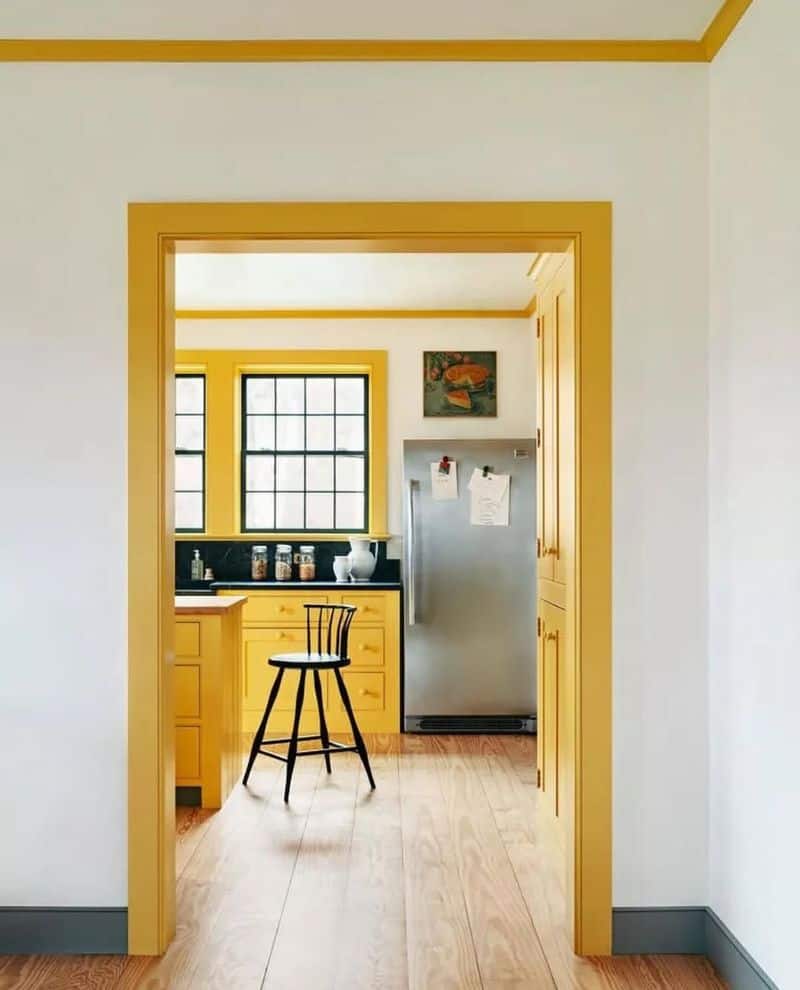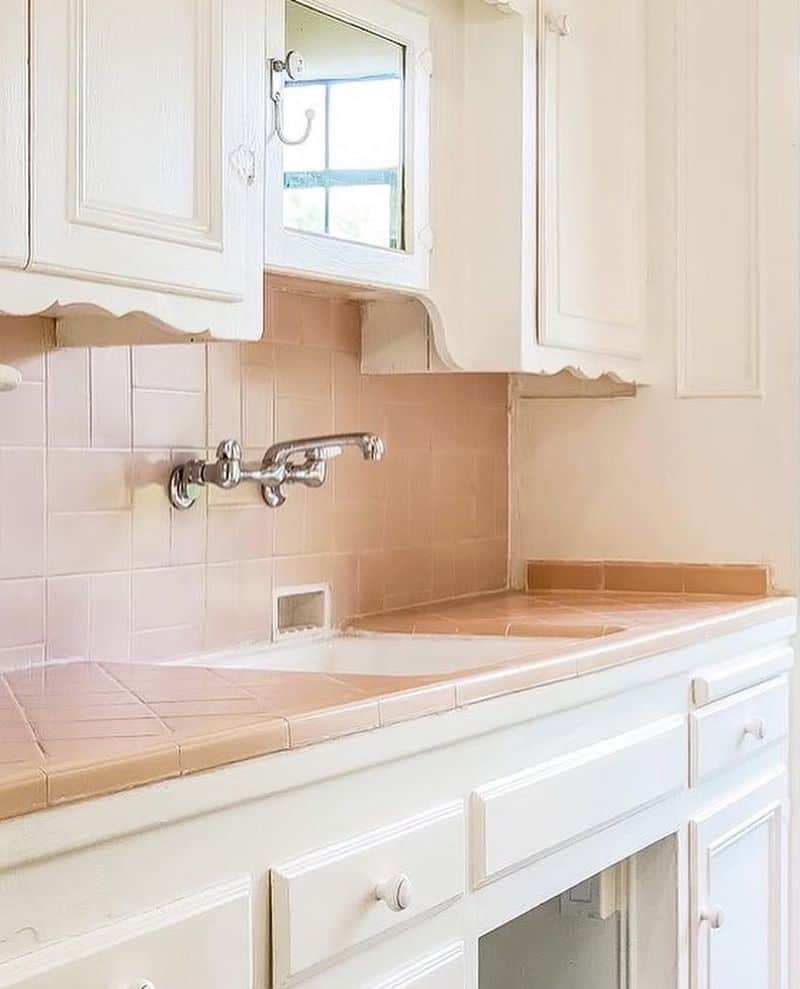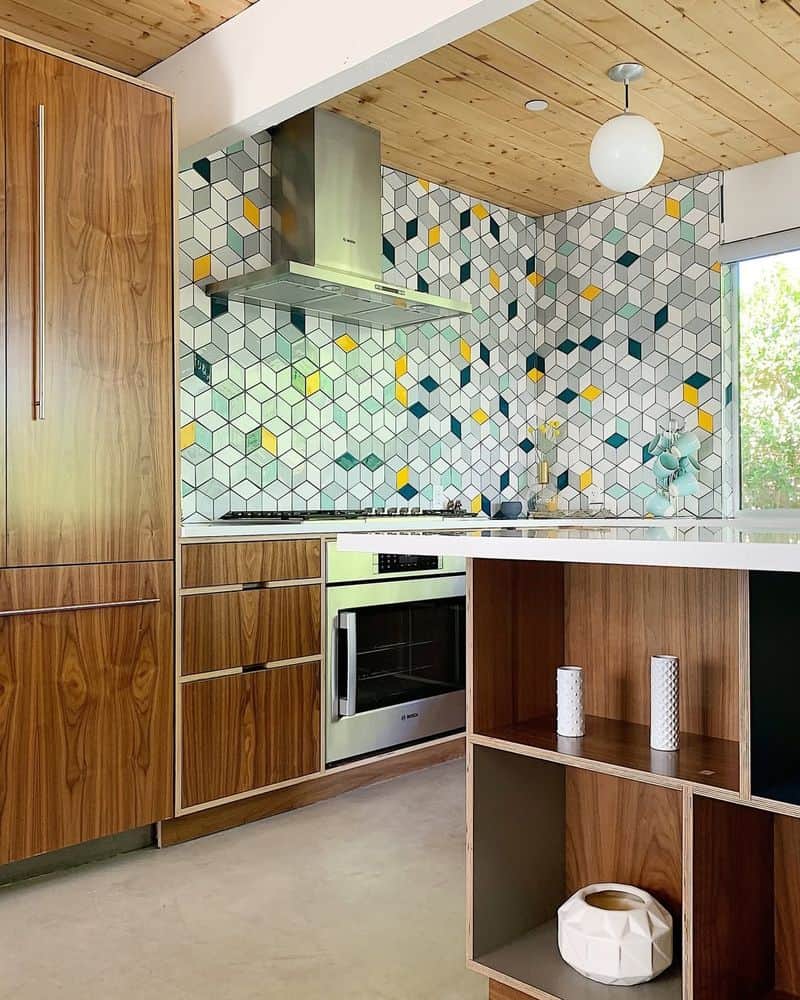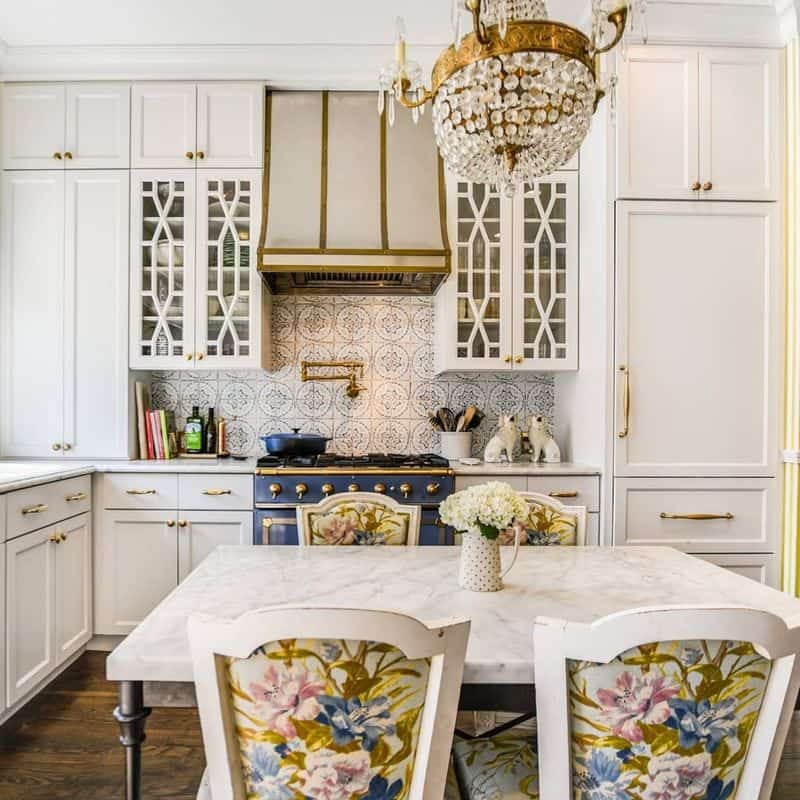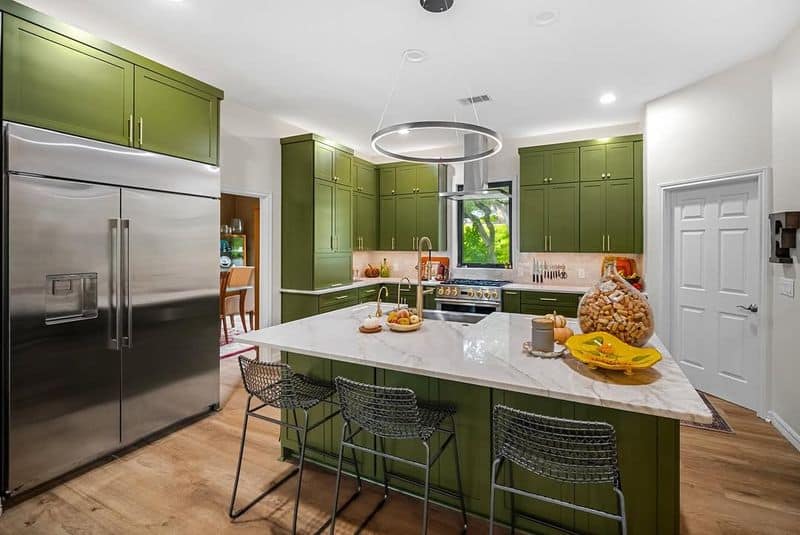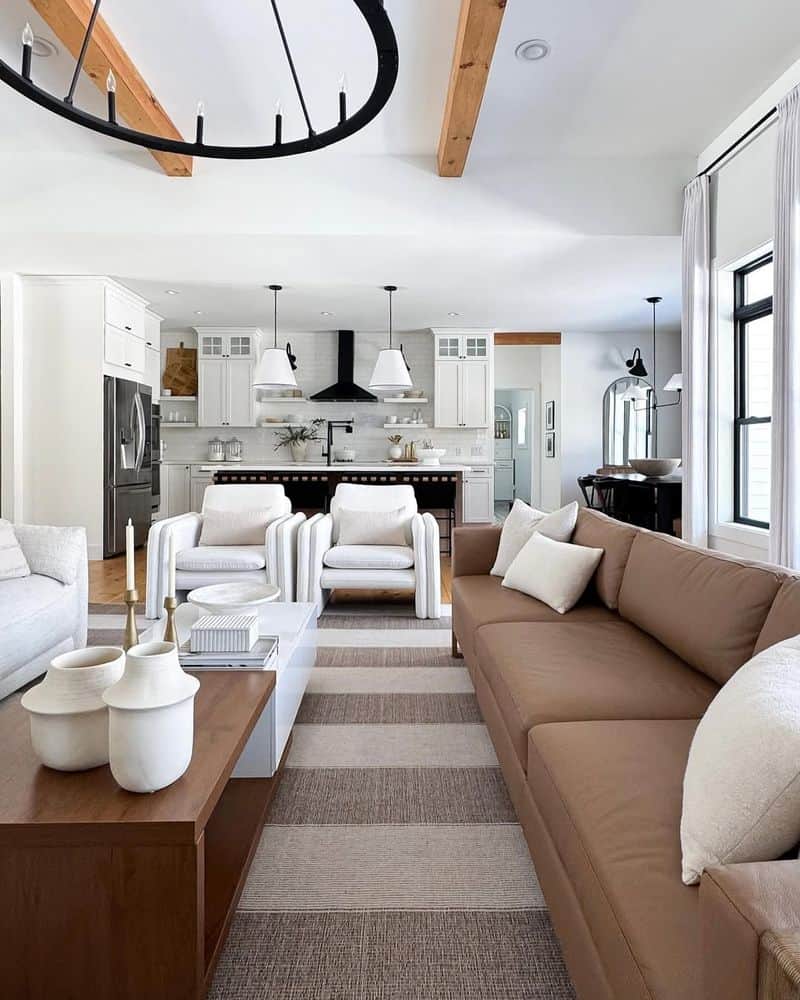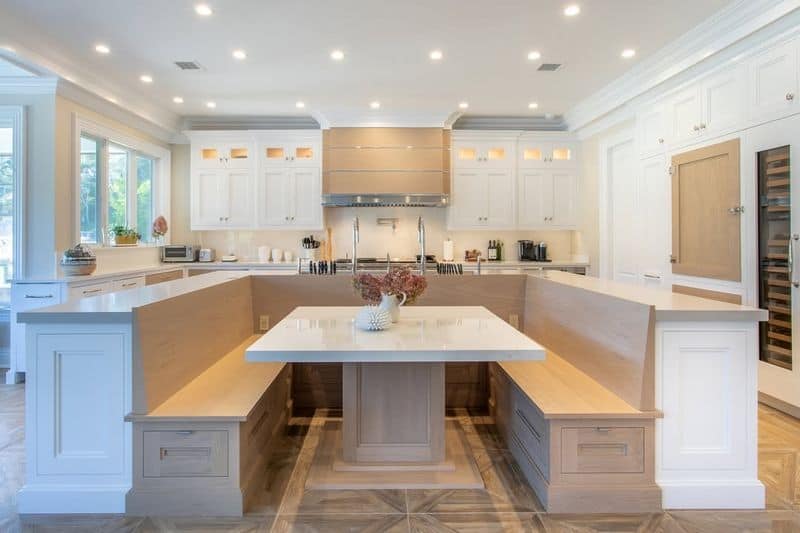When it comes to kitchen design, some trends that might catch your fancy could become potential pitfalls when it comes to resale value.
Here, we unravel 10 kitchen trends that, despite their initial charm, might not be the best bet for future home sales.
While these designs may be appealing now, they might lead to a different kind of buyer’s remorse down the line.
So, let’s dish out these trends that are all about style but leave homeowners with a bitter taste when selling.
1. Open Shelving
Open shelving looks stunning in magazines, showcasing vibrant dishes and sleek glassware. In reality, it translates into a dusty chore.
Shelves demand constant cleaning, and items need to be perpetually organized. Ditching cabinet doors may sound freeing, but buyers might see clutter. It’s a style that requires a neat streak and a cleaning habit.
Unless you enjoy your kitchen wares always on show, this trend can be more trouble than it’s worth.
Many potential buyers seek functional storage, not a display case, making open shelving a risky choice for resale.
2. Silver Hardware
Silver hardware feels timeless—until you realize every new build in the neighborhood boasts the same.
This once-chic choice can now feel bland and uninspired. Buyers might crave uniqueness, but the silver trend suggests a lack of imagination.
Switching out hardware is simple enough, yet the monotony it suggests might deter potential buyers. To stand out, consider mixing metals or choosing brushed finishes for a modern twist.
While silver maintains some appeal, it often fails to make a memorable statement, potentially impacting desirability during resale.
3. Oak Cabinets
Oak cabinets scream nostalgia and warmth, but can also yell outdated. They were the pinnacle of kitchen fashion decades ago, which can make your kitchen feel like a time capsule.
Potential buyers may prefer modern sleekness over vintage vibes. Painting over oak can refresh the space, but the task is daunting.
These cabinets might tell a story of durability, yet their style can overshadow functionality. In a market chasing minimalist trends, oak cabinets might not appeal to those seeking contemporary aesthetics.
4. Yellow Paint
Yellow walls might brighten your morning, but they can also blind prospective buyers. This cheery hue often lacks universal appeal, potentially making kitchens feel dated.
While color can enhance moods, bold choices might limit buyer imagination. Neutral tones are safer bets for prospective homeowners envisioning their own space.
If you adore yellow, consider it as an accent rather than a dominant shade. This way, your kitchen exudes warmth without overpowering potential buyers walking through.
5. Tiled Countertops
Tiled countertops might evoke a rustic charm, but they also scream maintenance nightmares. Those grout lines gather grime like a magnet, demanding constant scrubbing.
While tiles offer variety in color and style, their upkeep might dissuade buyers who prefer seamless surfaces.
Solid countertops like quartz or granite attract those seeking low-maintenance elegance.
Tiled tops suggest charm but often fail to represent modern convenience. For resale, smooth surfaces make a more compelling case than these retro renditions.
6. Trendy Backsplashes
Trendy backsplashes are the statement earrings of a kitchen—bold, eye-catching, and often regrettable. While they add personality, they also date quickly.
The issue isn’t the initial allure but the fleeting fashion that can put off buyers looking for timelessness. Opt for classic styles that accommodate evolving tastes, or be ready to replace them often.
Function, not flash, tends to win in resale value. Balance boldness with subtlety to ensure your kitchen remains attractive to potential buyers.
7. Anything Ornate
Ornate designs deliver uniqueness but can quickly become eyesores.
Detailed moldings and intricate patterns are like putting a mustache on a Mona Lisa—it’s a statement, but not always the right one.
Simplicity often holds lasting value in home design. While ornate elements feel personal, they can alienate buyers seeking a blank canvas. Subtle elegance proves more versatile and enduring.
Consider streamlining details to broaden appeal, ensuring your kitchen remains inviting rather than polarizing.
8. Unused Space Between Cabinets and Ceiling
The gap between cabinets and the ceiling: a dust collector and decorator’s dilemma. This space awkwardly perches knick-knacks, often forgotten until spring cleaning.
Buyers might view it as wasted potential, preferring cabinetry that extends upwards. Filling the void with storage solutions or extending cabinets can excite potential buyers.
While some see charm in decoration, functionality typically triumphs in resale value. To maximize appeal, use this space wisely or eliminate it altogether.
9. Open Concept Is a Gamble
Open concept designs seduce with their spaciousness but can backfire by eliminating cozy nooks. The absence of walls enhances social interaction but sacrifices privacy.
Some buyers cherish separate spaces for noise control and dedicated zones. While modern living embraces open plans, not everyone wants their kitchen antics on display.
Before knocking down barriers, consider if the space allows for flexibility in living arrangements.
Open concepts appeal broadly but can’t replace the charm of defined rooms.
10. Custom Island
Custom islands cater to specific tastes, but they can hinder resale by being too personal. While they offer practicality and style, their distinct design might not suit everyone.
Buyers may appreciate versatility over specificity. Ensure your island complements rather than dominates the kitchen.
Choose designs that enhance functionality without overshadowing the entire room. Customization is appealing, but neutrality often wins when selling.
Keep future adaptability in mind to ensure your kitchen remains attractive to a broad audience.

